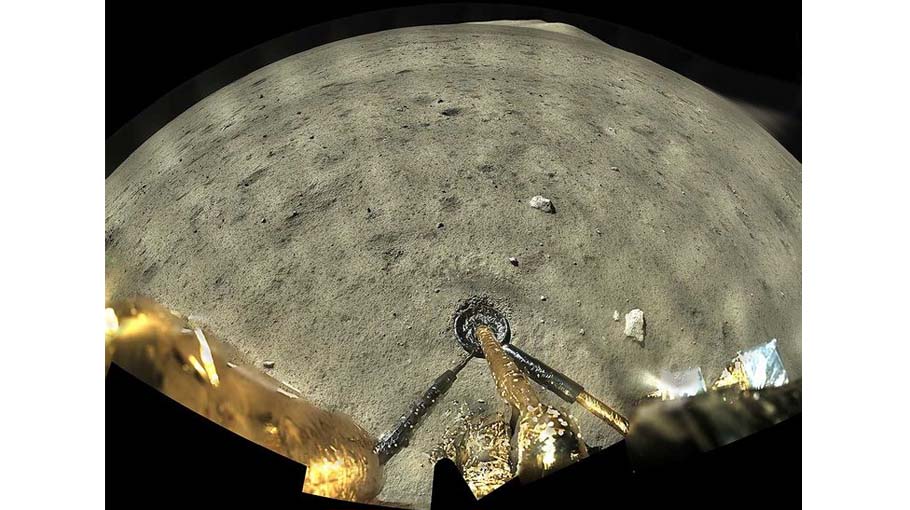How Earth’s future will be protected from space
We can explore the universe at a time when our own planet is at risk

My own response to the question posed above is that after 50 years of aiming for the stars, we now have to demonstrate that our Promethean dreams can ultimately contribute to a more sustainable life on Earth.
In-depth analysis of space exploration has to take into account its broader positive effects. I believe that these are so significant that, far from slowing down ecological transition, space exploration actually helps drive it forward.
So how exactly how does it do this?
Essential scientific input
We cannot stress enough the role that satellites play in our understanding of environmental phenomena. More than half of the essential climate variables defined by the United Nations can only be measured from space. Our progress in this field thus has a direct impact on what we know about climate change.
Read more: S Korea prepares test of 1st domestically made space rocket
The CO2M mission of the Copernicus Expansion programme illustrates that perfectly. It will enable the European Union to trace very precisely various carbon dioxide emissions and yield a goldmine of information on greenhouse gases.
But why should we look beyond the Earth’s orbit? We do know that traces of formation of the Earth can be found on the Moon and Venus had a temperate climate before an extreme greenhouse effect radically altered its atmosphere. Can we learn enough from all this to help predict the evolution of our own planet? I would bet that we can.
Building a more resilient future
Although our response to the challenges of climate change must not be limited to just technology, we do need high-tech support. Space exploration is a tremendous catalyst for innovation in fields crucial to ecological transition, such as energy efficiency, recycling and decontamination.
Launching resources into space is extremely expensive. There is thus a strong incentive to preserve these resources as much as possible, positioning our work in space to serve as a very advanced prototype for a circular economy.
For instance, in the habitation modules that Thales Alenia Space built for the ISS – along with those that will be built for NASA’s future Lunar Gateway station – water is managed in a closed circuit, with virtually no loss.
As access to clean water will become more crucial in the future, there is good reason to believe that our efforts to use it more efficiently will prove useful elsewhere.
Ability to harness Moon’s surfaceWe are also making good progress in the field of energy. We are finding ways to use resources in situ, thanks to advances in photovoltaic panels and the ability to harness the Moon’s surface. This paves the way for fully autonomous missions and the creation of new sources of clean energy on Earth.
We often have to look at breakthrough innovations in the long term, and space exploration enables us to develop the technological expertise that we will need to meet future climate challenges.
What is true of space projects is also true of diverse economic players. Ambitious missions like Artemis and ExoMars could never succeed without the collaboration of a very diverse set of stakeholders.
Here at Thales, we are in the pilot seat of this joint ESA-Roscomos1 programme aimed at discovering traces of life on Mars. The mission is scheduled to launch in 2022, with the spacecraft reaching the Red Planet in 2023.
Space projects demonstrate how much we can accomplish when united by a common goal. And if we can achieve this for a relatively small lunar mission, we should be able to meet the even greater challenge of protecting the climate.
Inspiring human progress
Earthrise, Blue Marble, a pale blue dot: these three iconic photographs from NASA’s Apollo and Voyager missions captured our imagination.
“We came all this way to explore the moon, and the most important thing is that we discovered the Earth,” said astronaut William Anders, who took the Earthrise photo in 1968.
Half a century later, we still have the same vision of space exploration: by seeing things from afar, we can better understand that our true purpose is to preserve life. This same perspective is the guiding principle of Thales Alenia Space’s vision, “Space for Life”.
We are immensely proud to play a part in this great human adventure, and to be part of its history; very few people know that Neil Armstrong’s first step on the Moon was filmed with a lens made by Angénieux, now part of the Thales Group.
In this period of challenges and uncertainty, we are even more passionately committed to this journey, since the saga of space is also that of our future on Earth.
Patrice Caine is the CEO at Thales.
Source: Gulf News




